DEIR AL-BALAH (AP) – Yasmin Eid coughs and covers her face, cooking a small pot of lentils over a fire fed with twigs and scrap paper in the tent she shares with her husband and four young daughters in the Gaza Strip.
It was their only meal for the day – it was all they could afford.
“My girls suck on their thumbs because of how hungry they are, and I pat their backs until they sleep,” she said.
After being displaced five times, the Eids reside in central Gaza, where aid groups have relatively more access than in the north, which has been largely isolated and heavily destroyed since Israel began waging a renewed offensive against the militant group Hamas in early October. But nearly everyone in Gaza is going hungry these days. In the north experts say a full-blown famine may be underway.
Last Thursday, the International Criminal Court issued arrest warrants against Israeli Prime Minister Benjamin Netanyahu and his former defence minister, accusing them of using “starvation as a method of warfare” – charges Israel adamantly denies.
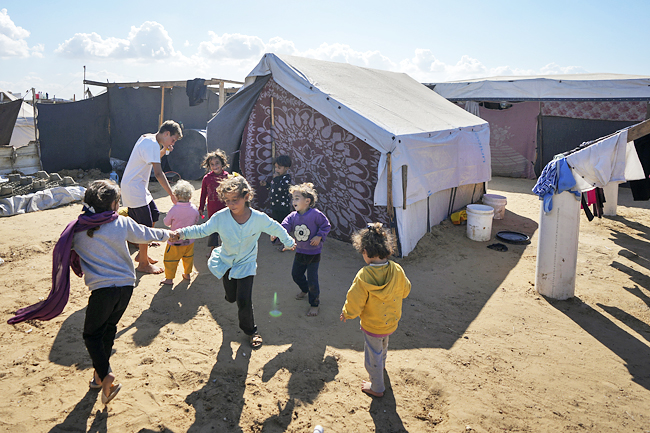
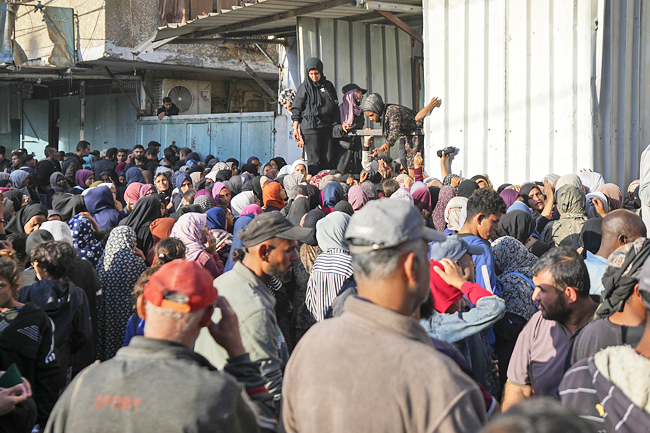
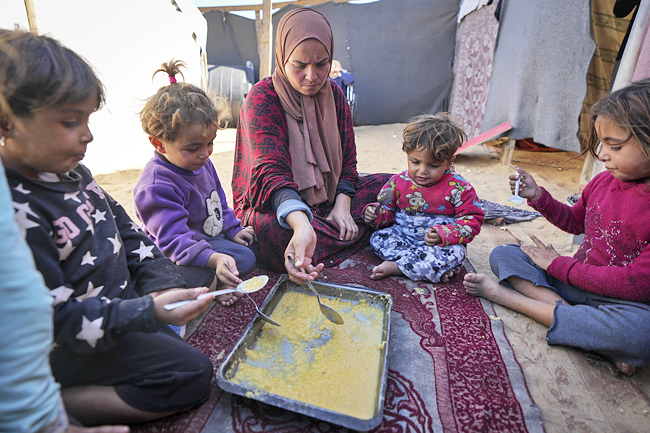
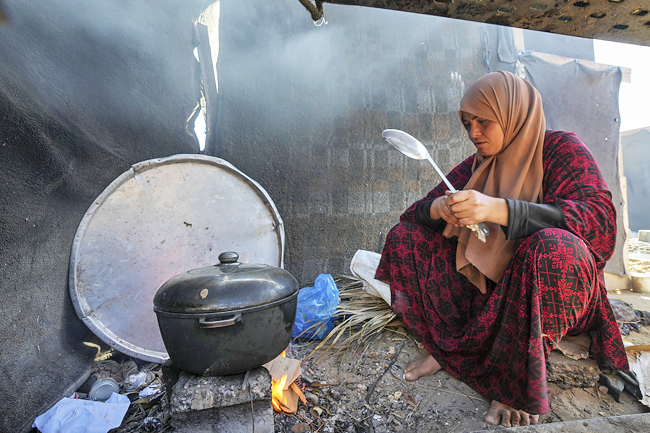
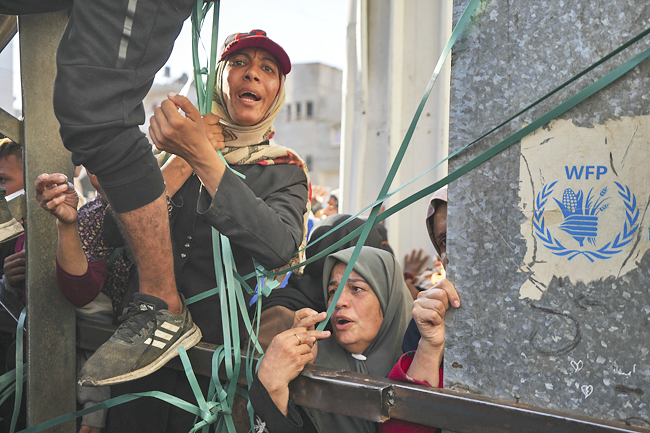
In Deir al-Balah, the Eids are among hundreds of thousands sheltering in squalid tent camps. The local bakeries shut down for five days this week.
The price of a bag of bread climbed above USD13, as bread and flour vanished from shelves before more supplies arrived.
The United Nations (UN) humanitarian office warned of a “stark increase” in the number of households experiencing severe hunger in central and southern Gaza. It appeared to be linked to the robbery at gunpoint of nearly 100 aid trucks last weekend in southern Gaza, close to Israeli military positions.
Israel blamed Hamas but appears to have taken no action to stop the looting, while Hamas said it was the work of local bandits.
Aid groups said the looting is one of many obstacles to getting food and other vital aid to the territory’s 2.3 million Palestinians. They also have to contend with Israeli movement restrictions, ongoing fighting, and heavy damage wreaked by the Israeli bombardment of roads and critical infrastructure.
HUNGER IS THE DAILY ROUTINE
For months, Yasmin and her family have gone to bed hungry.
“Everything has increased in price, and we cannot buy anything,” she said. “We always go to sleep without having dinner.”
She misses coffee, but a single packet of Nescafe goes for around USD1.30. A kilogramme of onions goes for USD10, a medium bottle of cooking oil for USD15 – if available. Meat and chicken all but vanished from the markets months ago, but there are still some local vegetables. Such sums are astronomical in an impoverished territory where few people earn regular incomes.
Crowds of hundreds wait hours to get food from charities, which are also struggling.
Co-founder of the Gaza Soup Kitchen Hani Almadhoun said his teams can offer only small bowls of rice or pasta once a day. He said they “can go to the market on one day and buy something for USD5, and then go back in the afternoon to find it doubled or tripled in price.”
Its kitchen in the central town of Zuweida operated on a daily budget of around USD500 for much of the war. When the amount of aid entering Gaza plummeted in October, its costs climbed to around USD1,300 a day. It can feed about half of the 1,000 families who line up each day.
THE SHARP DECLINE IN AID, AND A US ULTIMATUM
Israel said it places no limits on the amount of aid entering Gaza and has announced a number of measures it says are aimed at increasing the flow in recent weeks, including the opening of a new crossing.
It blames UN agencies for not retrieving it, pointing to hundreds of truckloads languishing on the Gaza side of the border.
But the military’s own figures show that the amount of aid entering Gaza plunged to around 1,800 trucks in October, down from over 4,200 the previous month. At the current rate of entry, around 2,400 trucks would come into Gaza in November. Around 500 trucks entered each day before the war.
The UN said less than half the truckloads are actually distributed because of ongoing fighting, Israeli denial of movement requests, and the breakdown of law and order. Hamas-run police have vanished from many areas after being targeted by Israeli airstrikes.
The war started on October 7, 2023, when Hamas fighters stormed into Israel, killing some 1,200 people, mostly civilians, and abducting around 250. Around 100 hostages are still inside Gaza, at least a third of whom are dead, and Hamas militants have repeatedly regrouped after Israeli operations, carrying out hit-and-run attacks from tunnels and bombed-out buildings.
Israel’s retaliatory offensive has killed over 44,000 Palestinians, more than half of them women and children, according to local health authorities.
The United States (US) warned Israel in October that it might be forced to curtail some of its crucial military support if Israel did not rapidly ramp up the amount of aid entering Gaza. But after the 30-day ultimatum expired, the Biden administration declined to take any action, saying there had been some progress.
Israel, meanwhile, passed legislation severing ties with UNRWA. Israel accuses the agency of allowing itself to be infiltrated by Hamas – allegations denied by the UN.
Israeli news outlets have reported that officials are considering plans for the military to take over aid distribution or contract it out to private security companies.
Asked about such plans, government spokesman David Mercer said “Israel is looking at many creative solutions to ensure a better future for Gaza”. – Wafaa Shurafa & Fatma Khaled






